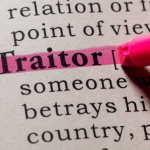A war broke out on October 7 when Hamas attacked neighboring Israel by air, land, and sea. According to Israeli police, the Sunni Islamist organization massacred over 1,200 individuals and abducted up to 240 hostages into the Gaza Strip. According to recent press sources, Hamas has been given a deadline by a senior member of Israeli Prime Minister Benjamin Netanyahu’s war cabinet to free the remaining captives.
On February 18, Israel Defense Forces (IDF) former Chief of Staff General Benjamin Gantz (Ret) issued a warning to Hamas, stating that the group would have to release all hostages by the start of Ramadan, failing which fighting would resume “everywhere, including Rafah, a Palestinian city located about 20 miles southwest of Gaza City.” March 10 is the start of the Muslim holy month, leaving Hamas with little time to spare.
Gantz also responded to those who said that a fresh offensive would come at too great a cost. Hamas has a choice, he declared. Gazans may safely observe the holy month of Ramadan, and the gang can free the remaining prisoners and surrender.
Recently, President Joe Biden informed Netanjahu that Israel should hold off on starting any military action in Rafah until it had a workable strategy in place to ensure the security and assistance of the city’s civilian population.
In response to their worries, Gantz stated that the IDF will work with Egyptian and American authorities to plan an evacuation during the attack in order to reduce the number of civilian deaths as much as possible. Nonetheless, representatives of the United Nations have repeatedly warned that non-combatants are not safe in the Gaza Strip.
For example, on February 19, Sigrid Kaag, the top UN coordinator for Gaza’s rehabilitation and humanitarian efforts, cautioned participants at a conference of European foreign ministers in Brussels of the dire consequences of an Israeli-led attack on Rafah for the civilian populace.
Reporters were also informed by Kaag that Rafah’s health situation was already grave. She clarified that there were already over a million people living in improvised shelters across the city.













